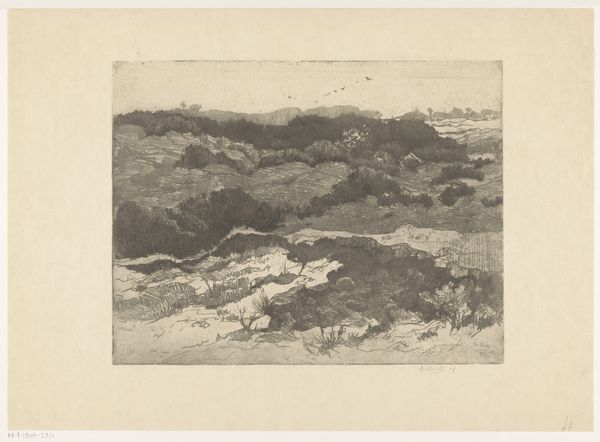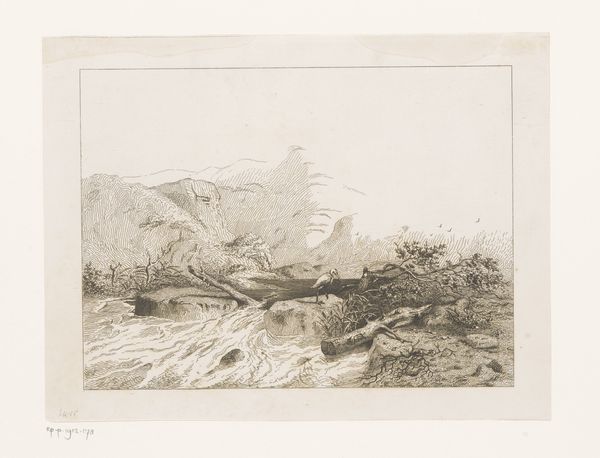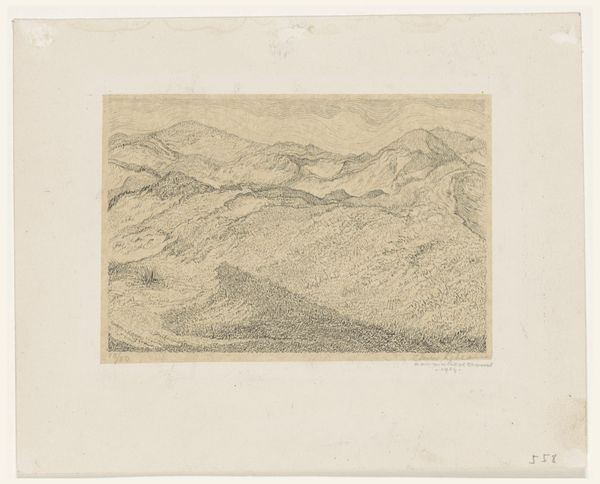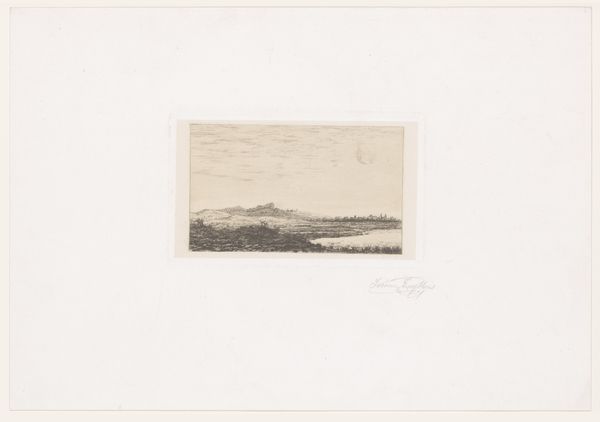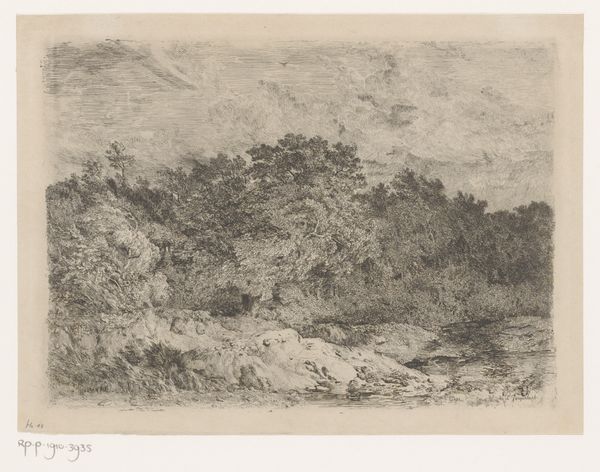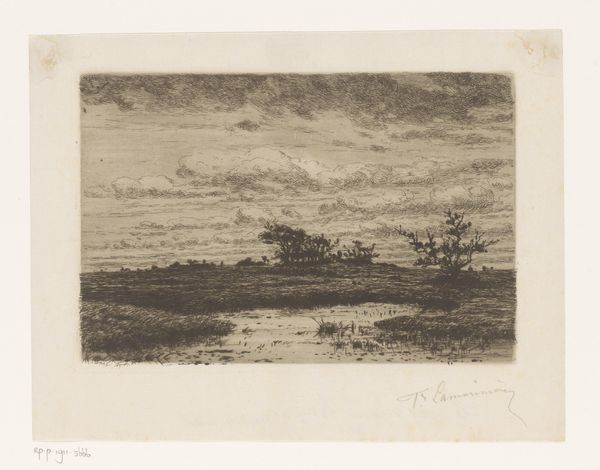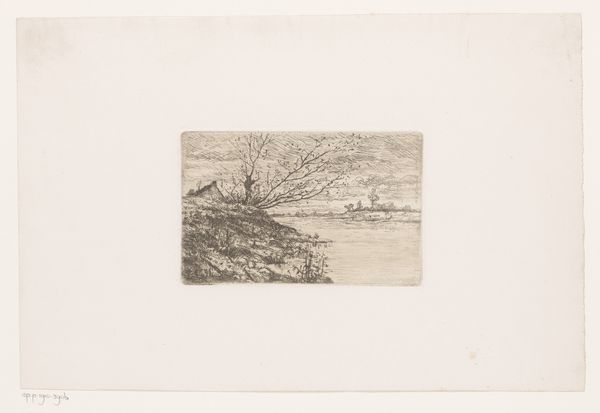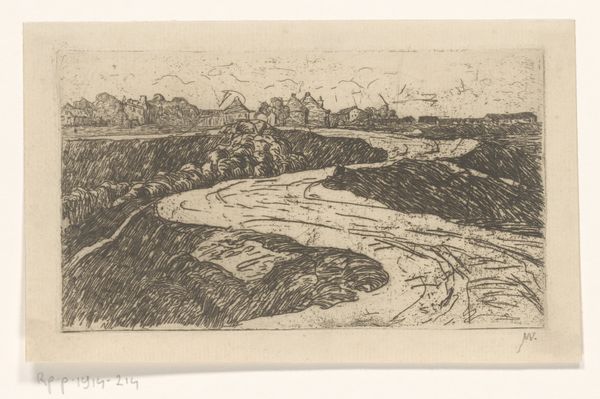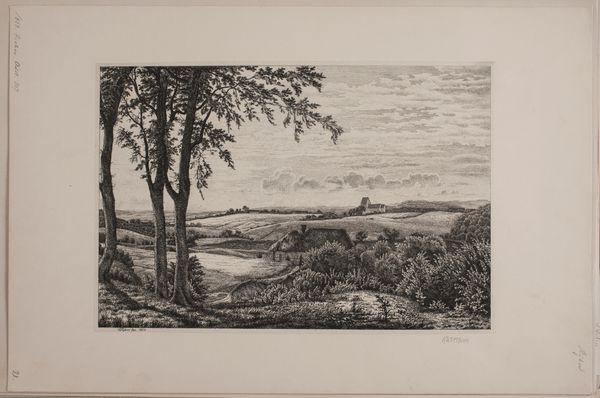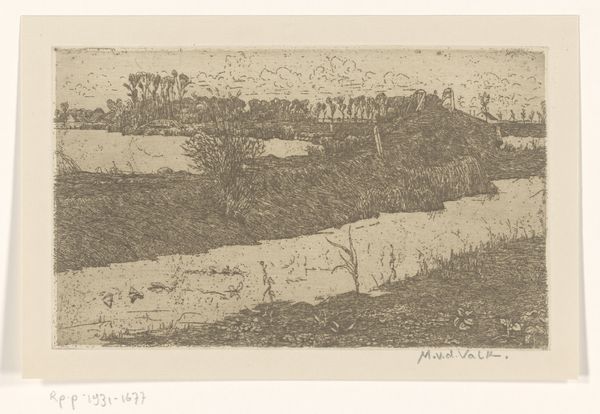
drawing, paper
#
drawing
#
landscape
#
paper
#
romanticism
#
realism
Dimensions: height 120 mm, width 160 mm
Copyright: Rijks Museum: Open Domain
Curator: What strikes me immediately is the starkness of this landscape, a bleak beauty rendered so delicately. Editor: I agree; it's both unsettling and captivating. Let’s delve into this drawing. What can you tell us about it? Curator: Certainly. This work, created by César de Cock in 1849, is entitled "Kaal landschap met op de achtergrond heuvels en bebossing", meaning "Bare Landscape with Hills and Woods in the Background." It’s rendered in precise lines on paper. Editor: The term 'bare landscape' seems apt. There's a rawness here that I connect with personally, but it feels laden with social undertones to me. Does the historical context of land use provide further insights? Curator: Indeed. Considering its creation during a time of social upheaval, it's possible to view this seemingly simple landscape as a reflection of the struggles and anxieties of the era. The tension between Romanticism and Realism at that time led to social anxieties; artists sought a radical representation of social realities, with land ownership often symbolizing power and control. Editor: Right, because for much of the populace at that time, "land" wasn't simply nature; it was access to autonomy, sustenance, community, survival even. This isn’t just an image of a field—it subtly gestures toward social realities around ownership and resources, and how unevenly these would be distributed. I wonder what De Cock sought to express. Curator: The choice of subject matter by artists like De Cock also reflects the shifting artistic landscape of the mid-19th century, where everyday scenes began to gain prominence, marking a departure from more idealized or overtly political subjects. The play of light and shadow across the barren foreground does emphasize its rugged qualities, yet there's a touch of hope offered by the distant hills and trees, perhaps. Editor: Perhaps you're right. For me, those hints of untouched nature underscore the need to acknowledge its inherent value. This landscape doesn't just reflect its time; it sparks necessary contemporary discussions about the relationship of human-driven systems of power and our ecologies. Curator: That's a very valid point. Thinking about it now, I do see how an image of quiet simplicity can incite some pretty potent discourse. Editor: Precisely, the visual components speak directly to modern questions of environmentalism and land stewardship. It's an eerie premonition from the past about the discussions we are having now.
Comments
No comments
Be the first to comment and join the conversation on the ultimate creative platform.

